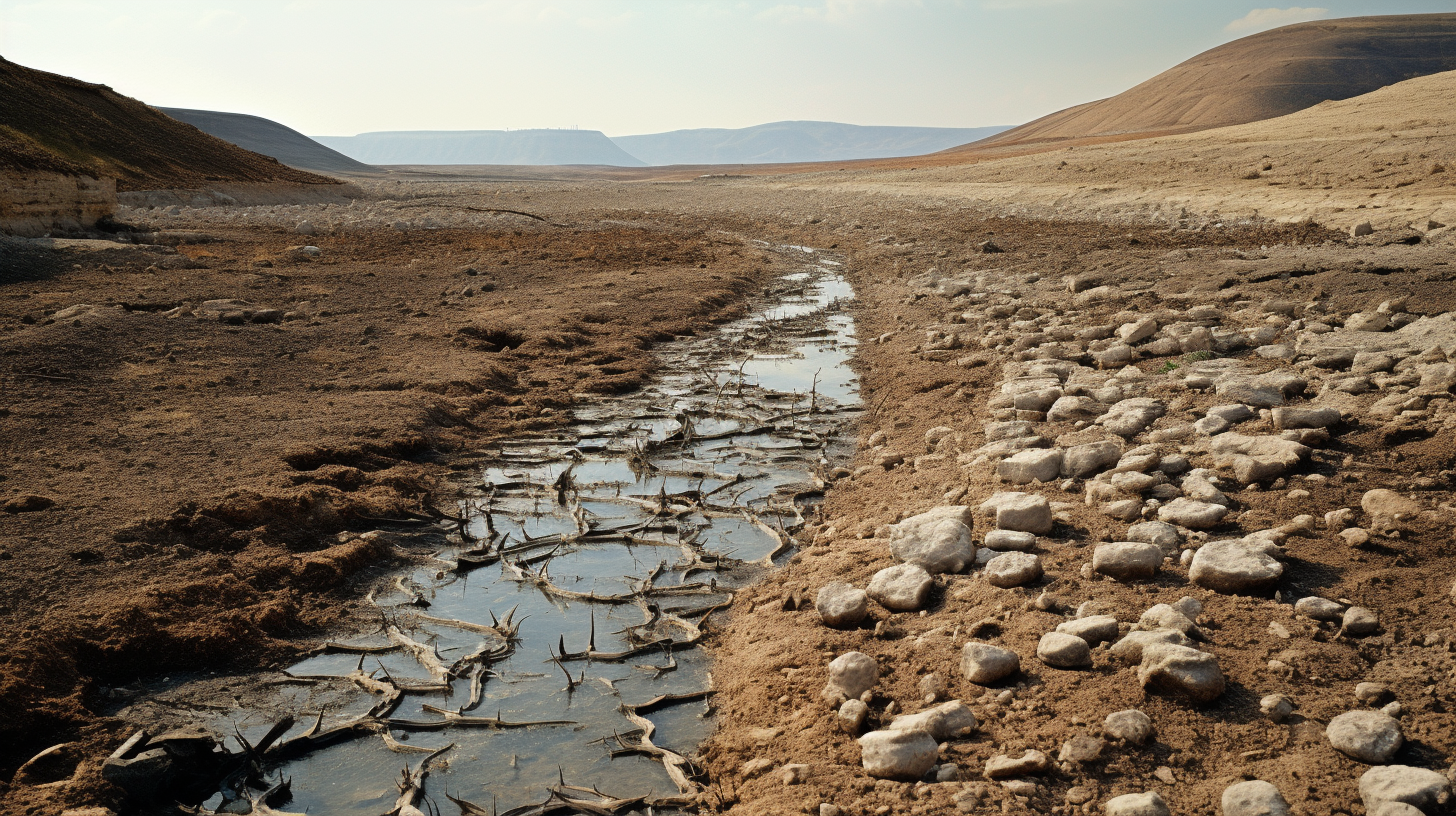In a world where the once mighty arteries of freshwater have withered to mere capillaries on the Earth’s parched surface, our global narrative entwines with the fate of drying rivers and disappearing dreams. The desiccation of these vast, life-supporting systems scribes a stark warning into the planet’s cracked soil. The story of depleted riverbeds is not just one of ecological heartbreak, but a prophecy of humanity’s own future, inked in the vanishing veins of our land.
Witnessing the Whispers of Water
Imagine standing by the banks of a river that once roared with vigor, only to hear the hushed whispers of its retreat. There, the echoes of children’s laughter, once carried by the currents, are now lost in the silence of expansion and entropy. The once-teeming fish markets stand as somber museums of a bygone era when rivers were synonymous with abundance. Empty nets symbolize the vacuity of towns and cities that grew around the lifeblood of these freshwater streams.
The Haunting of Dead Crops
Demise is not just evident in silence or the spectral markets; it etches itself into the land. Vast fields that fed nations, now face desertification’s insidious spread. The absence of water is evident, seeing that what were once verdant croplands, now lie fallow, haunted by the specters of food security and dead crops. Farmers who toiled under the sun, nurturing the bounty of the Earth, were the first to taste the bitter draught of the new reality – a chalice filled with the dust of evaporated dreams.
The Illusionist’s Trick
The resourceful, those who built modern-day Edens with hydroponic ambitions or like Neoma, who crafted empires on the promises of desalination, find their foundations shaken. Their aspirations, much like the illusory trick of an oasis, vanish upon closer scrutiny. These supposed bastions of hope, with every technological marvel at their disposal, could not prepare for the relentless march of scarcity. As if in a cruel play, the script of progress is found wanting, disfigured by the truth that technology alone cannot outpace the ravages of environmental neglect.
Dark Currents Beneath the Surface
Underneath the barren landscapes, and beyond the reach of the sun’s unforgiving glare, lie the dark currents of human desperation. Illegal wells plunge into the dwindling aquifers like straws desperate for the last drops of a shared drink. Black markets for water flourish in the alleys where children’s chalk drawings once colored the concrete. The value of water, once a given, now outstrips that of oil or gold, forming a perverse hierarchy where the most primal need becomes a luxury.
The Cult of the Empty Riverbed
Amidst this desolation, spirituality finds a strange bedfellow. Water-worshiping cults, referred to in our previous narrative, emerge not just as a response to scarcity but as a testament to the loss of a fundamental connection with nature. Here, the rites of replenishment are performed not to summon the rains, but to mourn the loss of balance, the pact between humanity and Earth, irreverently broken.
Reflections in the Sands
What remains for the once mighty rivers — these serpents of life — as they slither into the sunset of their existence? Their retreat leaves behind the artifacts of civilizations, pottery cracked under the unyielding sun, now part of the archeology of neglect. As we map the course of these evaporated dreams, we find ourselves confronted with the mirage of our making: that the advancement of our species could ever be divorced from the wellbeing of the rivers that sustain us.
Conclusion
Our dystopian lens focuses sharply on the stark reality; as rivers run dry, our dreams evaporate with them. Pulled into the narrative gravity of a world too far gone to be saved, the articles in this series do not aim to inspire hope, but rather, instill a sense of urgency, reflection, and perhaps, a twinge of regret for the natural pacts we’ve so easily broken.
